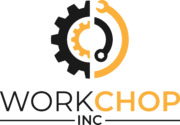Let’s face it, running a successful business is never a walk in the park. It comes with expected and sometimes unanticipated challenges, depending on the type of business or cycle. From product design to funding, marketing and revenue generation, business owners and C-Suite executives have a lot to worry about.
Generally, optimizing every aspect of the company’s operations and focusing on consistently delivering value to customers through continuous improvement should automatically increase productivity. However, manually handling such repetitive tasks requires huge resources and eventually becomes too expensive, distracting and ineffective.
As an example, one of the focus areas for forward-thinking organizations is attracting and keeping great talents. Workforce quality and employee engagement determine output. New hires often form their opinions regarding their new company within a week – and a lot of it relating to their onboarding experience. It is more than a mere initiation – its sets the tone for their entire cycle.
Employee onboarding however can be really stressful for the HR team and new employees because it involves learning new information, systems, policies, procedures and meeting new colleagues. But then, such processes can be optimized through Robotic Process Automation (RPA), a software technology that uses automation, computer vision, and machine learning to automate repetitive tasks that human workers perform. (www.ibm.com)
Below, we have highlighted some of the benefits of leveraging Robotic Process Automation (RPA), to enhance business performance.
- Process Automation: RPA can handle repetitive and rule-based tasks more efficiently than humans. By automating such tasks, businesses can free up employees to focus on higher-value activities.
- Increased Accuracy: Many businesses lose revenue and market share due to common human errors. Robotic Process Automation (RPA) can reduce errors and inaccuracies in routine processes, leading to improved data quality and decision-making.
- Cost Savings: By automating tasks that would otherwise require manual labor, businesses can reduce operational costs and improve overall efficiency.
- Scalability: Robotic Process Automation (RPA) can easily scale to handle increased workload or expanding business operations without the need to hire and train additional staff.
- Enhanced Customer Experience: Every business exists to solve problems and take customers through a memorable journey. Unfortunately, meeting and exceeding expectations can sometimes be a daunting task. By automating customer-facing processes, companies can provide faster response times and improved service quality, leading to better customer satisfaction.
- Data Analysis: RPA can collect and analyze data from multiple sources more quickly and accurately than manual processes, enabling businesses to make data-driven decisions faster.
- Integration with Existing Systems: RPA can be integrated with existing software systems, allowing businesses to automate workflows across multiple departments and systems.
- Compliance and Security: RPA can help businesses ensure compliance with regulations and security protocols by enforcing standardized processes and reducing the risk of human error.
By leveraging RPA effectively, startups, SMEs and global enterprises can streamline operations, improve efficiency, and scale their operations more effectively in today’s competitive business landscape.
Robotic Process Automation (RPA) can be used to automate a bunch of tasks, including call center operations, compliance reporting, customer order processing, credit card applications, data transfers etc.


